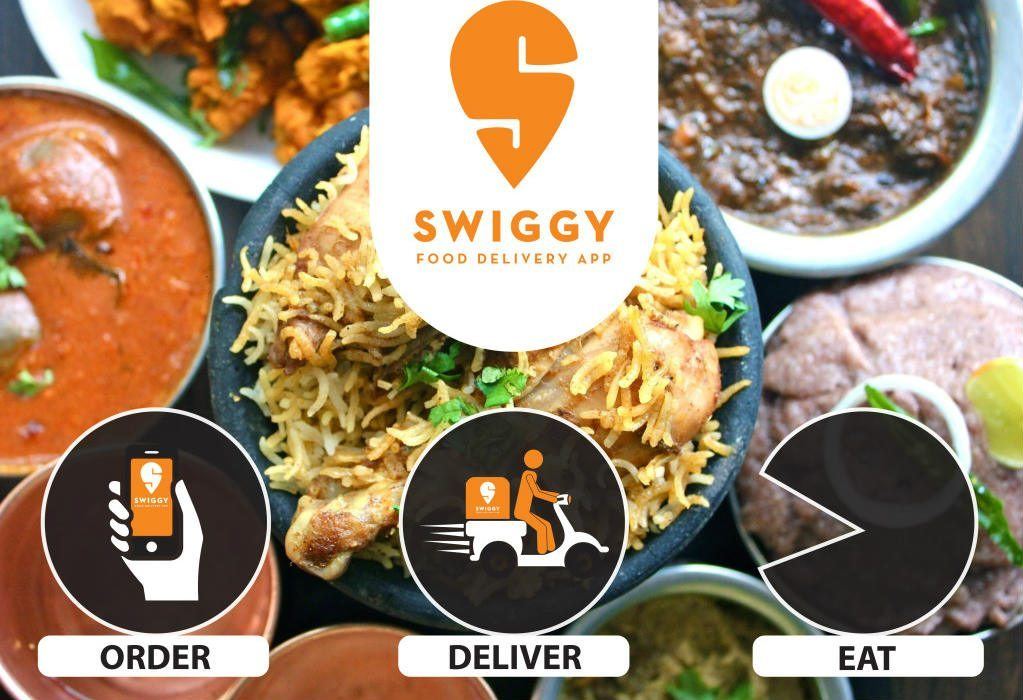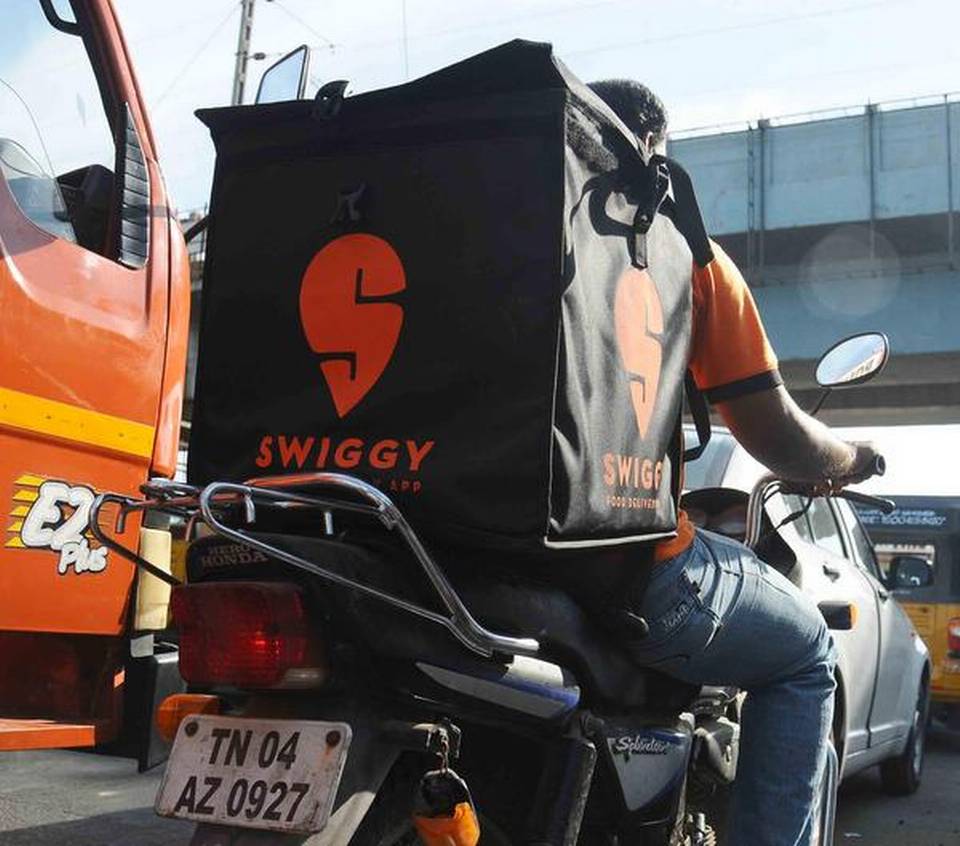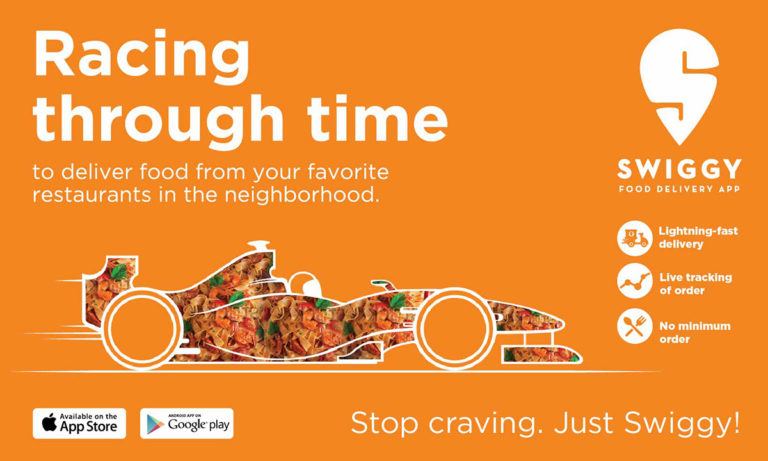Getting Swiggy With It: Your Favorite Foods, Faster

Always feeling hangry? Indian start-up Swiggy is using machine learning to decrease your meal's throughput time and keep you happy!
It’s happened to everyone: After a long day at work, it’s time to come home, relax, and prepare a nice meal.
But tonight, there is no time to cook.
Historically, typical outcomes have included browsing internet reviews, shouting at family members due to hunger, and falling asleep while eating ramen. Swiggy, an Indian start-up in the crowded online food delivery space, is working to eliminate such issues by getting to know you, and your dining habits, better.

Swiggy And The Machine: Why Is This Important?
Swiggy was founded in August 2014 by Sriharsha Majety, Nandan Reddy and Rahul Jaimini. While Swiggy began by partnering with a mere 25 restaurants [1], that number has since expanded to more than 35,000 [2].
However, this expansion has not come easy, as there are multiple competitors in India’s online food delivery market battling for customers and revenues. While Swiggy holds between 35-38% of the market, Zomato holds 25-30% [3], and other entrants including Areo (operated by Google), UberEATS, FoodPanda India, and Fresh Menu [4] are all looking for a piece of what is projected by Indian firm RedSeer Consulting to be an approximately $2.5B sector by 2021 [5].
In order to defend its existing market share and continue its growth, Swiggy has embraced machine learning. At the beginning of the ordering process, Swiggy provides a customized list of restaurants based on details derived from past orders and searches; these details include prices, types of food, and more [6]. Upon ordering, more calculations are completed based on the restaurant’s cycle time, driver locations, and more in order to determine who will deliver the food, along with his or her ideal route [7]. Machine learning leads to continued improvements for the algorithm, as “Swiggy generates terabytes of data every week and leverages this data” [8], and has likely given the company its edge over others. Without this assistance, the landscape would likely be quite different, with Swiggy possibly going out of business.
Process Improvements From Here On Out

What actions are being taken to further Swiggy’s growth and beat competitors? For one, it is utilizing machine learning to reduce throughput time and bring food to its customers even faster. Specifically, “Using technology to be more precise in predicting meal preparation times and to plan for delivery schedules accordingly is the top priority at Swiggy now.” [9] According to Majety, the company’s throughput time is currently 32-33 minutes; he added, “Can we shave that off by another 10 minutes is something we are asking now.” [10] In a slightly longer timeframe, Swiggy’s strategy appears to revolve around further enhancing its infrastructure and expanding into non-food delivery, internally or via acquisitions. Per Vivek Sunder, COO, “We invest in…stronger fleet, stronger technology operations, stronger restaurant connection, etc. We also use that to enter into and expand into new spaces. …[W]e…make capital investment and acquisition like we did with Scootsy a couple of months ago.” [11] Each of these tactics likely brings the company toward one ultimate goal: a more customer-centric algorithm, and in turn higher demand and market share versus competitors. By improving technology, the algorithm can probably be improved; the same can be said for attaining stronger restaurant connections, as Swiggy-originated orders can be prioritized and cycle time reduced. In addition, through expansion and acquisitions, Swiggy is very likely to obtain more customer data.

Additionally, I Wish You Would…
In order to adequately compete with Google, Uber, and others, Swiggy needs to differentiate itself. The best ways to do so are improving throughput time and lowering prices. In terms of operational efficiency, the company’s short- and medium-term tactics are on the right track. However, without knowing the current bottleneck with certainty, I would urge the company to focus on cycle times often as they increase restaurant efficiency. Traffic is notably terrible in India, and one anecdotal account has a 10 km trip out of Bengaluru taking 2 hours [12]. As such, restaurants may not remain the problem. In terms of reducing prices, while this is likely difficult in the short-term, in the medium-term I would focus on reducing costs related to delivery executives. While there is currently a war for talent [13], acquisitions and insolvency as Swiggy expands should reduce demand for employees over time and as such lower wages.
Remaining Questions
Two primary questions remain in my mind with respect to Swiggy. First, will Swiggy’s algorithms be able to compete with those of Uber, which has been refining its machine learning capabilities for a longer time, albeit in different markets? Second, can the company outlast its competitors financially in such a crowded market, specifically Google and Uber should they decide to continue food delivery operations in India?
(798 words)
Footnotes:
[1] Anshul Dhamija, “30 Under 30: How Swiggy’s co-founders changed the face of food delivery,” Forbes India, February 6, 2017, http://www.forbesindia.com/article/30-under-30-2017/30-under-30-how-swiggys-cofounders-changed-the-face-of-food-delivery/45761/1, accessed November 2018.
[2] Sandhya Michu, “Taste of efficiency: How Swiggy is disrupting food delivery with ML, AI,” Financial Express, August 23, 2018, https://www.financialexpress.com/industry/taste-of-efficiency-how-swiggy-is-disrupting-food-delivery-with-ml-ai/1288840/, accessed November 2018.
[3] Anirban Sen, “Swiggy revenue trebles, but loss doubles too in 2017-18,” Live Mint, October 29, 2018, https://www.livemint.com/Companies/cjK3T36vZl1easaVBMXVNN/Swiggy-revenue-trebles-but-loss-doubles-too-in-201718.html, accessed November 2018.
[4] Karan Kashyap, “The Food Delivery Apps That Are Competing To Gain Market Share In India,” Forbes, June 26, 2017, https://www.forbes.com/sites/krnkashyap/2017/06/26/the-food-delivery-apps-that-are-competing-to-gain-market-share-in-india/#33919caf1993, accessed November 2018.
[5] Salman S.H., “Food delivery sector on cusp of revival as investments pour in,” Live Mint, February 26, 2018, https://www.livemint.com/Companies/wvflI3e7yvjUOg8PTkvZMM/Food-delivery-sector-on-cusp-of-revival-as-investments-pour.html, accessed November 2018.
[6] Michu, “Taste of efficiency: How Swiggy is disrupting food delivery with ML, AI,” accessed November 2018. (see [2])
[7] Ibid.
[8] Ibid.
[9] Supraja Srinivasan, “At Swiggy, experienced hands & the hustle of the young founders delivered a 4X growth over last year,” The Economic Times, September 21, 2018, https://economictimes.indiatimes.com/small-biz/startups/newsbuzz/using-technology-to-predict-meal-preparation-delivery-schedules-top-priority-at-swiggy-now/articleshow/65895217.cms, accessed November 2018.
[10] Ibid.
[11] Prerna Lidhoo, “We invest in making our core stronger: Swiggy,” Fortune India, October 26, 2018, https://www.fortuneindia.com/venture/we-invest-in-making-our-core-stronger-swiggy/102623, accessed November 2018.
[12] Maria Thomas, “The daily horror of driving to work in India’s Silicon Valley,” Quartz India, August 3, 2018, https://qz.com/india/1334967/braving-the-legendary-bengaluru-traffic-jam/, accessed November 2018.
[13] “Swiggy, Zomato, UberEats have almost doubled salaries of delivery executives,” July 26, 2018, Business Today, https://www.businesstoday.in/current/corporate/swiggy-zomato-ubereats-almost-doubled-salaries-delivery-executives/story/280686.html, accessed November 2018.



I knew you were trouble when I read the headline — I want to order takeout now!
I completely agree with the current risks you outlined — focusing on cycle time for the bottleneck (most likely traffic) is definitely going to position Swiggy ahead of Uber and Google. Food delivery has moved from being a novel product to one that is established. This signals a sift toward customer focus rather than product focus in order to survive in a competitive market — it’s the same strategy that Amazon has pivoted towards.
As you alluded, the only way to reduce the bottleneck is through delivery people. One option I thought of is to reduce the delivery radius of restaurants during peak rush hour. Essentially you set a maximum delivery step to 12 minutes — the radius of delivery will then vary based on traffic patterns (which you could easily pull from Google Maps’ API). While this will reduce options during peak demand, I hypothesize there is significant population density that reducing delivery radius may not drastically limit food delivery options.
I agree, Erika — this article makes me want take-out, STAT.
The rising commoditization of food delivery apps will indeed present some trouble for Swiggy. Unless it fosters exclusive restaurant relationships (similar to Caviar in the US), Swiggy will have to rely on logistical prowess to maintain a competitive advantage over Google and Uber Eats. To do so, Erika proposes some thoughtful solutions. I agree delivery speed is paramount, and Swiggy should experiencing a short- medium-term advantage with its thorough understanding of the Indian marketplace. Perhaps another option to avert traffic challenges is to further increase the number of restaurants available on the site — which will raise the number of restaurants within a radius of a customer. Swiggy can then offer a dynamic delivery radius depending on the level of traffic, with restaurants available rising and falling to ensure delivery occurs in a timely manner.
With that said, Uber, Google and Amazon’s infiltration is imminent, and its resources are likely to far exceed that of Swiggy. The larger logistical advantage Swiggy builds, however, the better it can position itself as a potential acquisition target!
Great piece, very interesting use of machine learning. A concern that you addressed and I’m not sure how machine learning can help is with the traffic burden in India, which is a major barrier to their success as a company. Perhaps one way they can get around this (as a I know they do in London) is using bicycle delivery during heavy traffic times with a smaller radius of delivery. This focus might allow it to differentiate itself from its competitors that you mentioned that have a greater share of the data.
I never really thought about machine learning in this context, thanks for this!
Although I do tend to agree that benefits can be derived from being able to get your customers order faster, I am not sure if they would be able to utilize machine learning to be able to predict the food choices of consumers. I (I understand that I’m taking a personal point of view) almost never know the type of food that I will have when I order food from the outside. Secondly, I just want to be sure my food gets to my door within a reasonable time (10, 20, 30 or 40 mins) but more importantly I would like to be sure that everything was cooked properly. I would start to become suspicious if my amazing food were to get to me 15 minutes after I order it.
Interesting stuff though.
To answer your second question, there is a lot of value in being a local company that understands the market. Knowing what consumers value is half the battle and while customer service can be effective, having your finger on the pulse is critical and way more efficient. A good example of that would be Alibaba’s resounding victory over Ebay. Understanding pain points and having the resources to solve them is huge, and I firmly believe that local players can out-do foreign megacompanies.
I’m very skeptical that improving the company’s machine learning algorithms will improve it’s throughput times. It seems that food delivery services have reached a theoritcal limit of improvement – any mor.e improvement in delivery times would mean improving urban mobility in the countries where they operate.
I personally find your medium term solution – that you would focus on reducing costs related to delivery executives – a little challenging. While I’m sure executive pay is relatively high, if you assume that the company will grow going forward, will this change really move the needle? Since executive pay is a fixed cost (I assume you’re not adding many more executives as you scale), you should in theory get more operating leverage, in that you have more units to spread across this fixed cost. As a result, I would personally think in the medium term it may be more worthwhile to tackle other variable costs that could affect the unit economics of this service.
A very interesting read and thank you so much for your time!
Competition with tech giants will be very tough especially in an aggressive market such as India. E-commerce landscape in India is currently in a bloodbath and everyone is burning their cash like there is no tomorrow. in order for Swiggy to survived, Swiggy need to have a much better algorithm and clear value proposition.
I think the only way this company can meaningfully differentiate itself from larger, more cash-rich competitors is by understanding the local culture and tastes of the people in the regions that they compete in. They could provide differentiated products for the local markets that an American or Chinese company would have difficulty replicating, given their global focus. I also think the Swiggy brand, given that it is an Indian-born company, is a huge asset and source of pride for its citizens that could be leveraged.